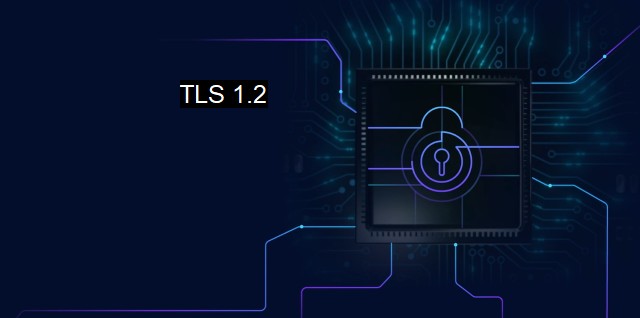What is TLS 1.2?
The Importance of Transport Layer Security (TLS) in Cybersecurity: Securing Online Transactions and Communications and the Advancements of TLS 1.2 Protocol
Transport Layer Security (TLS) Protocol 1.2, developed by the Internet Engineering Task Force (IETF), enables secure communications over computer networks. TLS 1.2, an upgraded version of its predecessor, TLS 1.1, is more advanced in performance and security features, thereby proving to be a central instrument in cybersecurity and antivirus efforts worldwide.To understand its relevance it is essential to know the fundamental shift it brought in cybersecurity. Remember, we are living in an age where our personal and professional data can be seen swiveling through the internet by the second. It is virtually impossible for an average internet user to fathom the depths or lengths their data can travel to reach certain destinations, and in numerous cases, these routes aren't entirely secure. Therefore, a tool to safeguard this valuable information while in transit is critically important. This is where TLS 1.2 comes into play.
TLS 1.2 provides what is essentially a security envelope around the transmitted data, obscuring it during its journey and making it inaccessible to unauthorized entities. It utilizes encryption to convert the information into an unreadable format that can only be converted back (i.e., decrypted) using the appropriate cryptographic key. when an individual logs into their bank accounts online, TLS 1.2 acts as a protective shell to ensure that the sensitive data, including passwords and bank account numbers, are securely transmitted and protected against potential cyber threats.
In terms of its technical characteristics, one of the notable improvements in TLS 1.2 over its earlier versions is its enhanced capability to initiate a secure network connection more speedily. It also supports a superior suite of cryptographic algorithms which increases the chances of preventing advanced cybersecurity attacks. it includes an extension that facilitates faster connection times and a provision that allows for the primarily secure AES (Advanced Encryption Standard) encryption.
When discussing TLS 1.2 in the context of antivirus protection, it’s crucial to realize that its encryption capabilities notably add a security layer against malware attacks. By securing the online flow of information, it effectively reduces the risk of malware being injected into the network traffic. By safeguarding connections against intrusion, these cryptographic protocols essentially prevent harmful accesses from getting remotely executed on systems.
Even though TLS 1.2 offers an integrated methodology for cybersecurity protection, it is not devoid of vulnerabilities. in 2014, vulnerability in the handling of certain types of encryption algorithm was exposed (CVE-2014-3566, also known as POODLE), allowing equipped attackers to decipher contents of encrypted connections. Hence, usage of TLS, like other protocols, must be done responsibly and in the context of informed configuration management.
As the evolution in addressing cybersecurity challenges remains a continuous process, newer protocols have been developed. TLS 1.3, the latest version of the protocol, was instrumental in addressing some of the vulnerabilities present in TLS 1.2 while increasing performance and security.
The history and practical implementation of TLS 1.2 underscore its importance as a valuable tool that helps to maintain a robust defense against possible cybersecurity threats. Its effective use significantly reduces the risk of security breaches, thereby substantiating its value as an integral component in modern cybersecurity strategies. Worth-noting, its link to antivirus measures reflects a strong collaborative action that not only bolsters safety on individual systems but also on broader networked environments. As Internet security remains an intense battlefield, the necessity for protocols like TLS 1.2 cannot be denied. Their upgrades and the lessons learned from their limitations further reinforce the need for the development of even more reliable security protocols.

TLS 1.2 FAQs
What is TLS 1.2?
TLS 1.2 stands for Transport Layer Security version 1.2, which is a protocol used to provide authentication, data integrity, and confidentiality over the internet. It is used to secure communication between clients and servers and is a crucial component of cybersecurity.Why is TLS 1.2 important for cybersecurity?
TLS 1.2 ensures that data exchanged between clients and servers is encrypted and secure from eavesdropping or interception. It also prevents tampering of data in transit and ensures that both parties can verify each other's identities. As cyber threats become more sophisticated, TLS 1.2 is a critical tool for protecting against attacks and ensuring the safety of online transactions.Can antivirus software detect TLS 1.2 vulnerabilities?
Antivirus software is designed to detect malware and other types of malicious software on a computer or network. While it cannot directly detect TLS 1.2 vulnerabilities, it can provide protection against attacks that exploit these vulnerabilities. For example, antivirus software can detect and block malware that attempts to intercept or modify TLS traffic.What are some common TLS 1.2 vulnerabilities?
Some common TLS 1.2 vulnerabilities include POODLE, Heartbleed, and BEAST attacks. These attacks take advantage of weaknesses in the TLS protocol to gain access to sensitive information or compromise the integrity of data in transit. To prevent these vulnerabilities, it is important to keep software up-to-date and use strong encryption protocols such as TLS 1.2.| | A | | | B | | | C | | | D | | | E | | | F | | | G | | | H | | | I | | | J | | | K | | | L | | | M | |
| | N | | | O | | | P | | | Q | | | R | | | S | | | T | | | U | | | V | | | W | | | X | | | Y | | | Z | |
| | 1 | | | 2 | | | 3 | | | 4 | | | 7 | | | 8 | | |||||||